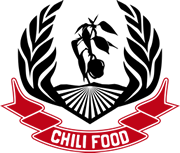Chili Spiciness Table / Scoville Scale
The classification of chili spiciness according to Wilbur Scoville
Inhuman 10+ : >200 000 Scoville Units
Extremely hot 9-10 : 100 000 - 200 000 Scoville Units
Very hot 6-8 : 15 000 - 100 000 Scoville Units
Hot 3-5 : 1500 - 15 000 Scoville Units
Mild 0-2 : 100 - 1500 Scoville Units
The spiciness of your chili sauce depends, of course, on the type of chili used. The Scoville Scale gives the spiciness level in Scoville Units (0-16 Million Units).*
At the mild end of the scale are the sweet peppers in your garden, with a rating of 0.
The spiciness of the various chili sauces
Anaheim, Cherry, and Peperoncini are between 100-500 Scoville Units.
If you go a bit higher with 1000-1500 Scoville Units, you reach the Poblano variety, where you start to notice something. But never forget, our bodies get used to the spiciness.
Jalapeños are a bit spicier, however with 2500-5000 Scoville Units they are still at the lower end of the scale. This doesn’t mean that they aren’t spicy. However, in relation to Habaneros they are quite mild. Dried and smoked Jalapenos are called Chipotle, and have a value of up to 10 000 Scoville Units. Serrano with 10 000 - 23 000 Scoville Units und Cayenne with 30 000-50 000 Scoville Units lie on the path to the greats.
It gets serious with the Japanese Santake and the Thai chilies with 50 000 to 100 000 Scoville Units. The really hardcore chilies are the Jamaican Hot (up to 200 000), Scotch Bonnet (up to 250 000) and of course the Habanero with up to 350 000 Scoville Units.
One of the spiciest chilies in the world is the Indian Bhut Jolokia (also called Naga or Bih Jolokia) with an unbelievable 1 000 000 Scoville Units.
The Trinidad Scorpion Butch T with 1 463 700 Scoville Units was named by the Guinness Book of World Records as the spiciest chili in the world. Now the Trinidad Scorpion Moruga with 2 009 231 Scoville Units may claim this title for itself. The question is for how long?
*The Capsaicin content varies with the location of cultivation, weather conditions, soil and many other aspects of growth. The soft inner parts around the core contain the highest content of Capsaicin. The drying of fresh chilies naturally increases the content of Capsaicin.
